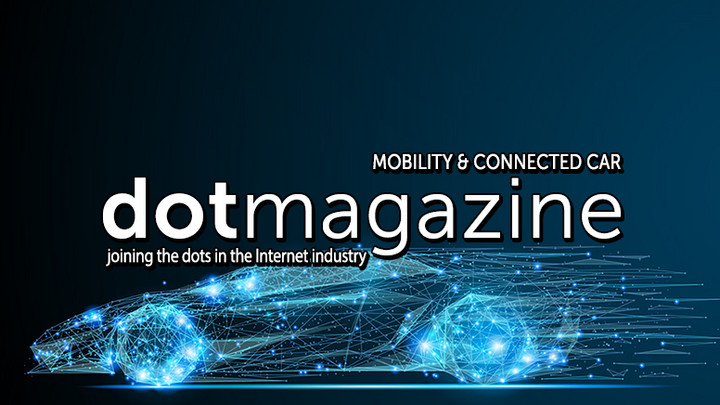doteditorial: Data-Driven Mobility & The Connected Car Market
Data is the unlimited resource powering the future of driving. A look at the conditions needed for connected and self-driving cars, and the potential to harness and monetize the power of data.

© antoniokhr | istockphoto.com
In little over a century, our city centers have been transformed from a world of horses and pedestrians to a world of horsepower and traffic jams. Cities around the globe are seeking solutions to relieve traffic congestion, improve air quality, save time, and improve the lives of commuters. Central to solving these problems is data: combining connectivity, computing power, and Artificial Intelligence to offer completely new mobility services and automotive products (for an example, see “Mobility Thought Differently – Pure Fiction?” by Martin Przewloka, from msg systems, and for the ecological impact of mobility, see “A Delphi-Based Estimation of Several Ecological Utility Values of Internet Applications”, by Prof. Georg Rainer Hofmann & Meike Schumacher from the Aschaffenburg University of Applied Sciences). These require the building of cooperative ecosystems, bringing together multiple players from along the transport value chain and the Internet industry. Here, we will look at how this applies to the connected car.
The connected car ecosystem is very complex, involving a large number of stakeholders and enormous potential for new business models. The buck no longer stops with the automotive industry itself: Certainly, we have the OEMs (original equipment manufacturer), with parts from EOEM (electronic original equipment manufacturer) suppliers. These are then delivered by car dealerships, garages, or through the car manufacturers themselves. But with the connected car, there is an additional stakeholder network on the side of the Internet industry. This is the Internet value chain – starting with sensors, the onboard systems, with connectivity dependent on network supply, and the data delivered to data centers and cloud platforms which are provided by car manufacturers, by suppliers or by other service providers (see the DE-CIX article “The Car as Connected Platform — Connecting Stakeholders in the Automotive Industry”).
New business models in the connected car ecosystem
The saying that data is the new oil may initially seem remarkably pertinent for the connected car, and for autonomous driving. Services will run on the power of data generated by the car, by the driving behavior, and from the surrounding environment (for more on the data generated by connected cars, see “The Car as a Driver for Data Growth Needing New Infrastructure Solutions”, by Frank Zachmann from Innovit360). But that is where the similarity to oil ends, because data is a resource of infinite potential, and the more of it we have, the more valuable it becomes. Harnessing the power of the data from connected cars will open up as yet unthought-of business opportunities (see the article “Urban mobility – Parking and Car Sharing in Tomorrow’s Cities”, by Thomas Frohn from VDI Wissensforum).
There are a range of scenarios for how the dataflows work and where they could be delivered, and how this data can be monetized in the provision of new services. Data can, for example, be delivered to insurance companies, enabling them to offer insurance premiums to motivate responsible or economical driver behavior– more like a bonus system for good driving, rather than a punitive system.
Data can also be collected from the board system, like the usage of air conditioning systems or other features. This would allow companies to deliver as-a-service features: so that, for example, the air-conditioning system operates on a leasing agreement, where the driver pays per hour or per use, rather than purchasing the product. And looked at like this, it is possible to lease everything. This is very interesting also from the supplier perspective, because the seat-heating systems, for example, can be delivered by suppliers of the seats. Obviously this demands totally different agreements between the partners involved because it depends upon who provides the onboard service and who collects the data.
So far, only very few car manufacturers have implemented systems like this, and it is yet to be seen whether offers of this nature will achieve significant market penetration. However, it is a possible scenario for what can be done with onboard data.
Machine-learning and Artificial Intelligence represent another area where services could be offered. If you're a platform provider and you have a very intelligent and secure platform, this could be a service you offer to the car manufacturers to process and analyze the data they are collecting from the cars they have sold or leased. Of course, some form of intelligence is necessary, because the car’s environment is changing every minute, every second, and it is not possible to implement all these scenarios in your system. A self-learning system is therefore important to analyze potential scenarios. The systems will depend on neural networks to analyze events and the environment, to learn from them, and also to learn from the driver's behavior.
Building the framework conditions for connected and self-driving cars
Government stakeholders and law enforcement are also involved. The VDA (German Association of the Automotive Industry) has been working for several years on the issues of how to regulate these connected car systems and how to give advice to the government and politicians concerning the main issues, and what should be done. They are working together with the automotive industry and with the government, and they are developing rules and seeking consensus on what needs to be regulated.
The eco Association is also becoming more involved in the mobility topic, with a workshop at the ConCarExpo in Berlin in June on building a security mobility ecosystem, including questions of data ownership and the topic of building new business models on the basis of data. The association is also developing guidelines on the Connected Car, to be published in autumn 2018. Another focus for the eco Competence Group IoT is security and data protection for mobility solutions.
And so this ecosystem is a very complex amalgamation of stakeholders from several industries, who are all interested in data from the car, who can work with the data, and create new business models with the data. Of course, manufacturers have to make sure that the handling of the data is ethical and legal, and only data that the driver has consented to is transmitted. But users also need to recognize that it is actually positive for the connected car to be contributing to the intelligence of the overall system, because connected cars represent a first step towards truly autonomous driving.
There is a great future for autonomous driving systems; this will save a lot of money and markedly reduce pollution, as well as reducing stress for the car drivers. There are a range of test locations for autonomous driving cars, such as in China, where they are very interested in this technology, as well as in Germany. In other places, such as the US and Dubai, self-driving cars are already in live operation.
From the connected car to the self-driving car
The car itself is something like an edge computing system, with its own computers in the board system which work with the data mix: For example, for the parking system there needs to be analysis of obstacles and people on the street, the images coming through the cam, and data from other sensors. The board system must be able to recognize hazards, and give a call to action to the car based on its analysis – like braking, or driving around the obstacle. But this is only one part of the connected car systems, because there is also external connectivity: connections to accident assistance services, to breakdown services, to the entertainment system, connections to other cars – if the driver opens the blue-tooth network or Wi-Fi to other cars – and connecting a mobile phone to the car makes another bridge to Wi-Fi or to the mobile network.
Of course, all of these connected computer systems also mean that IT security is essential, as eco Board Member Prof. Norbert Pohlmann points out in his interview on “Connected Car Security”. Manufacturers need to include security-by-design in their product development – and that includes all the suppliers throughout the value chain (see the article by Marco Comastri from CA Technologies, “New Frontiers for Car Security: API Management”) – and methods need to be devised to ensure automatic system updates without end-user involvement. The human element – of a stressed commuter delaying the system update until later – needs to be circumvented. What’s more, there are the legal implications of the possibility that autonomous cars could be self-owning and self-managing, and what liability will look like in this environment, as discussed by Klaus M. Brisch and Marco Müller-ter Jung from DWF Germany, in their article “Blockchain-based Solutions and IT/Cyber Security for Autonomous Driving – Legal Barriers”.
Connectivity becomes essential once we start talking about the self-driving car. From an infrastructure perspective, the most important thing is to increase the signal of the mobile networks. eco Vice-Chair Klaus Landefeld takes a look at the types of networks and connectivity solutions needed to support the development of the connected car in his article “Building the Infrastructure for the Future Driving Experience”. Certainly, if the car is travelling through a very long tunnel, the system may be offline for a while. Then the car is dependent solely on cameras or the other sensors to analyze what's happening in the surrounding environment. But there are obviously places in the world where getting a signal could be a problem. GPS can be received everywhere and will be a valuable source of data for enriching the car’s contextual information.
There is a lot of research being done on autonomous driving without connectivity. This offers very interesting opportunities for logistic companies transporting to or through remote areas, for example. Perhaps, in 10 or 15 years, a road train in the middle of Australia travelling to a small city in the outback along long straight roads, with good visibility for the onboard cameras, could be autonomous and offline. For this, the vehicle would require a lot of offline data. But in built-up regions of the world, where there are a lot of other cars, then connectivity is essential. The car has to see approaching traffic, what is happening on the side of the street, whether there are any other important changes in the environment, like traffic jams and the like, making it a very complex undertaking. It will probably take another 15 years to develop systems to allow fully autonomous driving in city centers.
It is the freeway system where we are likely to see the first examples of truly autonomous driving, bringing new meaning to the concept of the information superhighway.




